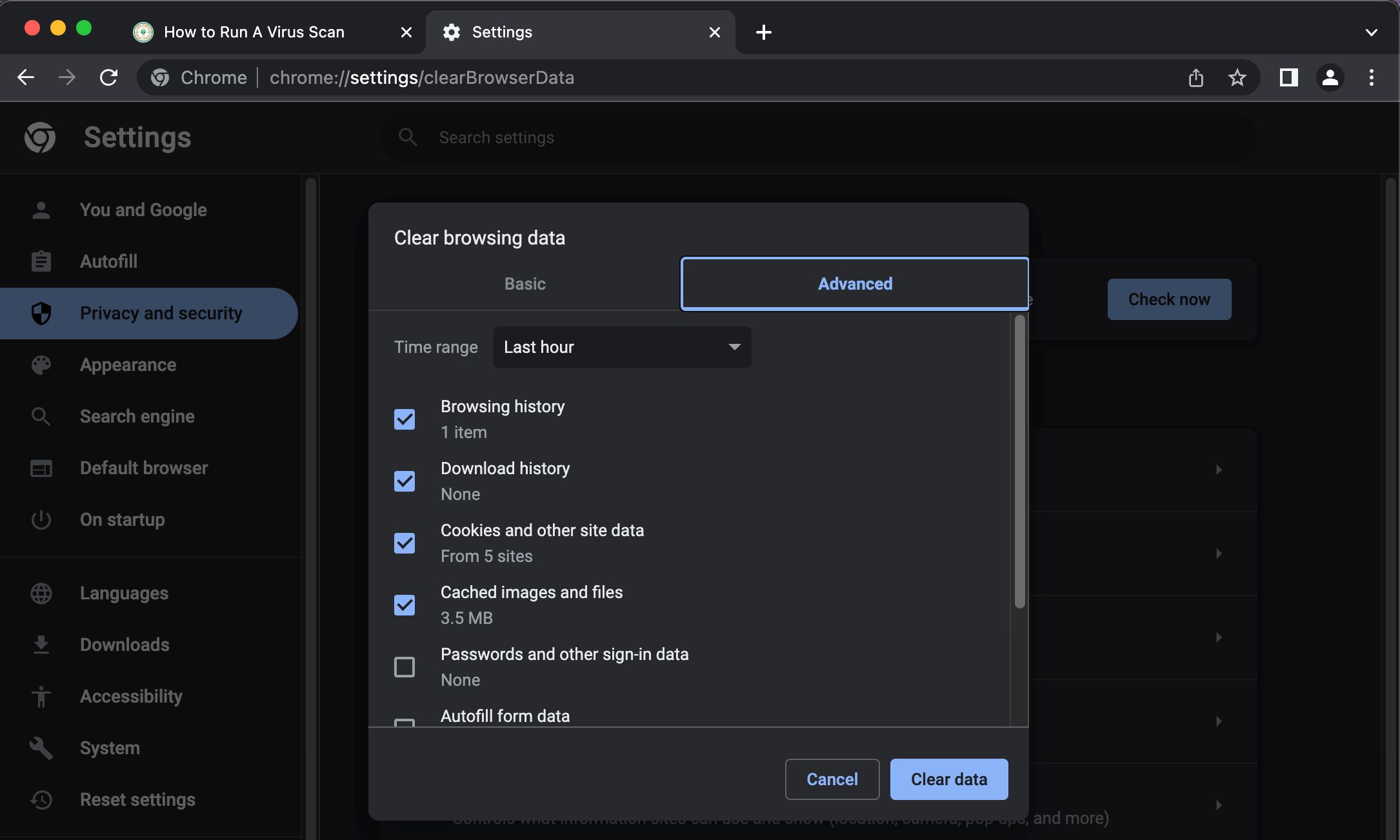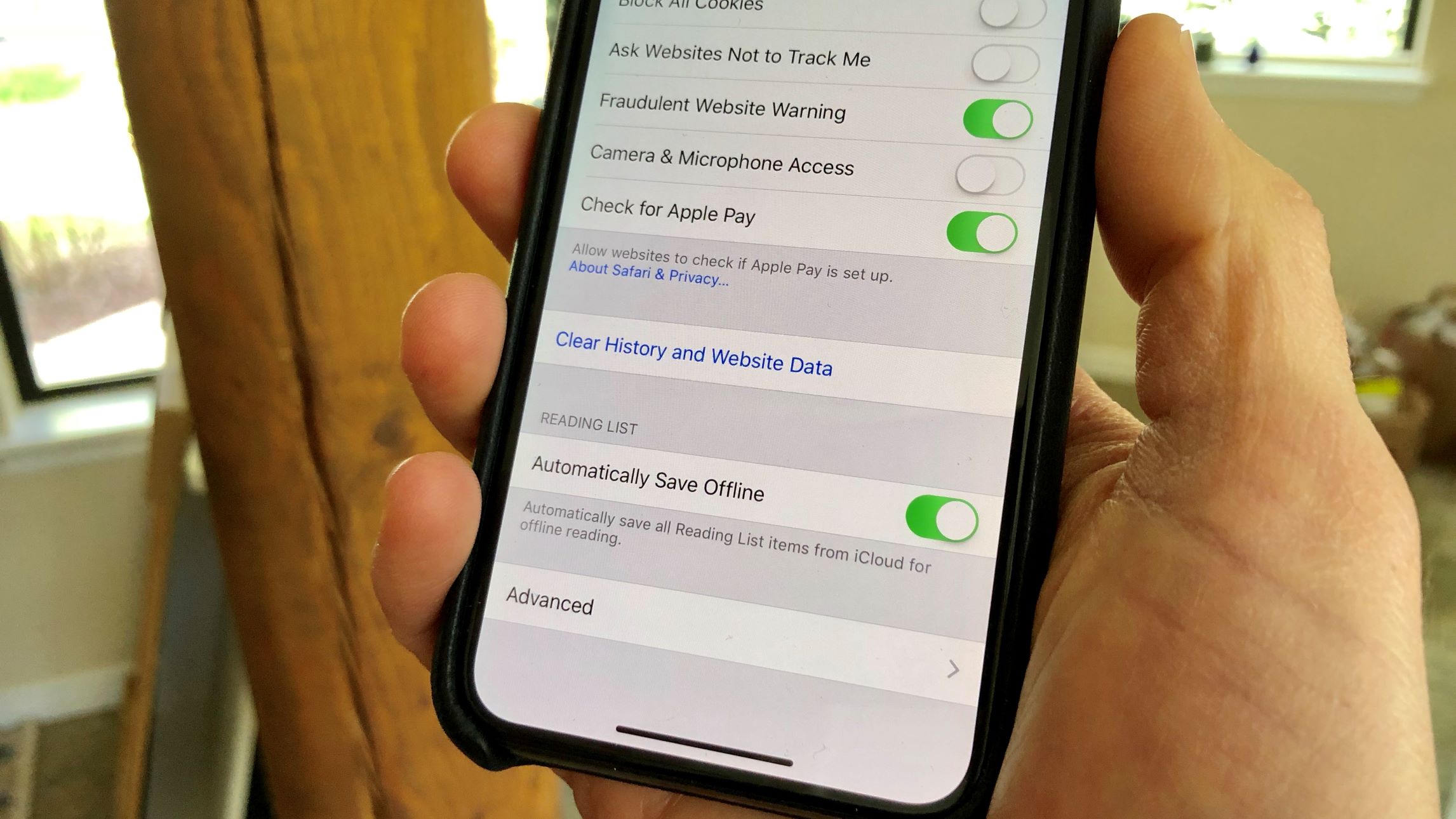What is browser cache?
When you browse the internet, your web browser stores various components of the websites you visit, such as HTML files, images, CSS stylesheets, and JavaScript scripts. This storage is known as the browser cache. It serves as a temporary storage location on your computer or device, allowing web pages to load faster upon subsequent visits.
The purpose of the browser cache is to reduce the time and bandwidth required to load web pages. Instead of downloading all the website’s files every time you visit it, your browser can retrieve certain components from the cache if they haven’t changed since your last visit. This significantly speeds up the loading process, making your browsing experience smoother and more efficient.
Think of the browser cache as a handy library that keeps a copy of frequently accessed web resources for quicker access. It acts as a local storage for website elements, eliminating the need to fetch them from the web server each time you navigate to a page. This not only saves time but also reduces the strain on network bandwidth, benefiting both users and website owners.
It’s important to note that the browser cache is specific to each individual device and browser. This means that the cache for one browser on your computer won’t affect the cache of another browser or the cache on a different device. Each browser maintains its own separate cache, which can be cleared or managed independently.
While the browser cache offers numerous advantages in terms of speed and efficiency, it’s crucial to understand when and why it may be necessary to clear it. This ensures that you always have the most updated version of a website and helps troubleshoot any issues that may arise from outdated or conflicting cached files.
Why does browser cache exist?
The browser cache exists to enhance your browsing experience by reducing the time it takes to load websites and improving overall performance. Here are a few reasons why browser cache is an essential component of web browsing:
1. Improved page load speed: By storing website components locally, the browser can quickly retrieve and display them instead of relying on a slow network connection. This significantly reduces page load times, allowing you to access information more efficiently.
2. Bandwidth optimization: When you revisit a website, the browser cache allows you to retrieve cached files instead of downloading them again. This reduces the amount of data your device needs to download, which is especially beneficial for users with limited bandwidth or slow internet connections.
3. Reduced server load: By utilizing the browser cache, websites can decrease the number of requests made to their servers, resulting in lower server loads. This can help websites handle higher traffic volumes and improve their overall performance and reliability.
4. Consistency and stability: The browser cache ensures that websites render consistently by using previously downloaded resources. This helps maintain the consistency of the user experience by displaying websites as intended, even if there are network disruptions or temporary server issues.
5. Offline browsing: Some websites are designed to be accessible even when offline. By caching web pages, browsers allow users to view previously visited content without an internet connection, making it convenient for tasks like reading articles during flights or accessing information in remote locations.
In summary, the browser cache exists to optimize website loading times, conserve bandwidth, reduce server load, maintain consistency, and enable offline browsing. It is a fundamental part of web browsing technology, contributing to a faster, smoother, and more efficient online experience.
How does browser cache work?
The browser cache operates by storing certain files and resources locally on the user’s device. When a webpage is visited, the browser checks its cache to see if it has any of the required resources already stored. If it finds the files in the cache and determines that they are up to date, it retrieves them from the cache instead of downloading them again from the web server. This significantly reduces the time required to load the webpage.
When a user accesses a website for the first time, the browser retrieves all the necessary files from the web server and stores them in the cache. This includes HTML files, images, CSS stylesheets, JavaScript scripts, and other resources. The browser also stores metadata about these files, such as their size and modified date, to determine if they have changed since they were last cached.
The caching process is governed by HTTP headers, which can be set by the web server. These headers determine how long a file should remain in the cache before it expires. When a file is cached, the browser associates it with its corresponding URL, so if the user revisits the same webpage, the browser can quickly locate and retrieve the cached files.
However, it’s important to note that not all files are cacheable. Some resources, such as pages that require authentication or dynamic content that is unique to each user, are typically not cached. In such cases, the browser must fetch the files from the web server every time the page is accessed.
To ensure that the cache remains efficient, browsers use caching algorithms to determine when to evict or replace cached files. When the cache reaches its capacity limit, the browser removes older or less frequently accessed files to make room for new ones. This helps maintain optimal performance and storage utilization.
It’s worth noting that developers can control caching behavior through HTTP headers and directives. They can specify if a resource should be cached, how long it should be cached, and whether the cache should be bypassed entirely. This gives website owners greater control over how their content is cached and delivered to users.
In summary, browser cache works by storing files and resources locally on the user’s device, allowing for faster webpage loading times. The browser checks the cache for requested files and retrieves them if they are available and up to date. Caching is governed by HTTP headers and can be controlled by developers to optimize performance and user experience.
The benefits of clearing browser cache
Clearing your browser cache periodically offers several benefits that contribute to a better browsing experience. Here are a few advantages of clearing your browser cache:
1. Improved browsing speed: Over time, the browser cache accumulates a large number of files from various websites. These files may become outdated or cluttered, affecting the loading speed of web pages. By clearing the cache, you remove these unnecessary files, allowing the browser to fetch the latest versions of web resources. This helps to boost the speed at which pages load, resulting in a more responsive and efficient browsing experience.
2. Enhanced privacy and security: The browser cache stores not only web page resources but also information about your browsing history, such as cookies and login credentials. While this can be convenient for quickly accessing websites, it also poses a risk to your privacy and security. Clearing your cache removes these stored data, reducing the chances of unauthorized access or data breaches.
3. Accurate website rendering: Occasionally, web pages may undergo updates or changes that are not reflected in your browser’s cache. This can result in elements of the page appearing distorted or not functioning properly. By clearing the cache, you ensure that the browser fetches the most up-to-date versions of all resources, ensuring accurate rendering of websites and avoiding any display or functionality issues.
4. Troubleshooting website issues: In some instances, problems with websites can be attributed to cached files. If a website is not loading correctly, clearing the cache can help resolve the issue. By removing cached files, you force the browser to download fresh versions of the resources, which can fix problems like missing images, broken layouts, or JavaScript errors. It can serve as a quick and effective troubleshooting step before seeking further assistance.
5. Freshness of content: Some websites use caching techniques to ensure that content is updated regularly. By clearing your cache, you ensure that you are accessing the most recent content, especially for sites that frequently update their pages or display dynamic information. This allows you to have a more accurate and current browsing experience.
In summary, clearing your browser cache offers several benefits, including improved browsing speed, enhanced privacy and security, accurate website rendering, troubleshooting website issues, and accessing the most recent content. Performing this simple task regularly helps maintain optimal browser performance and ensures a seamless and up-to-date browsing experience.
Improved browsing speed
One of the key benefits of clearing your browser cache is the significant improvement in browsing speed. As you browse the internet, your browser stores various files, including images, stylesheets, scripts, and other resources, in its cache. While caching is intended to enhance performance, over time, the cache can become bloated with outdated or unnecessary files, resulting in slower loading times for web pages. Clearing the cache helps address this issue and provides several advantages for improving browsing speed.
When you clear your browser cache, you effectively remove all the stored files from previous visits to websites. This means that when you revisit a website, your browser has to download and store all the necessary files again, including the most up-to-date versions of these resources. This process ensures that you have the latest content and eliminates any potential delays caused by outdated or conflicting cached files. By retrieving fresh files directly from the server, your browser can load the web page more quickly, resulting in fast and efficient browsing.
Moreover, clearing the cache also helps free up storage space on your computer or device. The cache can grow in size as you browse more websites and accumulate larger files. Clearing the cache regularly ensures that you have enough storage capacity for new files, preventing your device from becoming sluggish or running out of space. By maintaining adequate storage, your browser can perform optimally and load web pages faster.
In addition to clearing the cache, you can also take advantage of browser caching settings. Most web servers send instructions to browsers on how long files should be cached. By appropriately configuring these caching settings, web servers can instruct browsers to store certain files for longer durations, reducing the need to download them on subsequent visits. This further enhances browsing speed by retrieving files from the cache instead of making repeated requests to the server.
Clearing the browser cache is particularly beneficial when experiencing slow loading times or when encountering websites with performance issues. It ensures that your browser fetches the latest versions of website resources, eliminating any potential bottlenecks caused by outdated cached files. By regularly clearing the cache, you maintain an optimized browsing experience with faster page load times, enabling you to access information more swiftly and efficiently.
Enhanced privacy and security
Clearing your browser cache regularly offers significant benefits in terms of privacy and security. The browser cache not only stores website resources but also retains information such as cookies, login credentials, and browsing history. While this can be convenient for quick access to websites, it can also pose a risk to your privacy and security if unauthorized users gain access to your device.
By clearing your cache, you remove potentially sensitive data that could be used maliciously. This includes stored login information and session tokens that can be exploited by hackers to gain unauthorized access to your accounts. Clearing the cache ensures that all traces of this information are removed, reducing the risk of unauthorized access and protecting your online identity.
Another privacy concern arises from the tracking capabilities enabled by cached files. Websites use various tracking technologies, such as cookies and pixel tags, to gather data about your browsing behavior. These files are stored in your cache and can be used to create user profiles and track your online activities. By clearing the cache, you delete these tracking files, making it more difficult for third parties to monitor your browsing habits and behavior.
Furthermore, clearing the cache also helps safeguard your privacy by removing any saved form data, including autofill suggestions and stored passwords. If multiple people use the same device or if you are concerned about unauthorized access, clearing the cache ensures that none of your sensitive information remains stored in the browser, reducing the risk of accidental disclosure or unauthorized use.
In addition to privacy concerns, clearing the cache can help mitigate security risks. Cached files can potentially become targets for malware or malicious scripts. Hackers may compromise websites and inject malicious code into cached files, which can then be executed when the user revisits the compromised website. By regularly clearing the cache, you remove these potentially harmful files, reducing the risk of exposing your device to malware or other security threats.
It’s important to note that clearing the cache does not guarantee complete privacy or security. Other measures, such as using secure connections (HTTPS), updating your browser and operating system, and employing antivirus software, should also be implemented to ensure comprehensive protection. However, clearing the browser cache is a simple and effective step towards enhancing your privacy and security by removing stored data and reducing exposure to potential risks.
Accurate website rendering
Clearing your browser cache plays a crucial role in ensuring accurate website rendering, allowing web pages to display as intended by the website developers. When you visit a website, your browser stores various components like HTML, CSS stylesheets, JavaScript files, and images in its cache. While caching improves page loading speed, it can sometimes cause issues when cached files become outdated or conflicting with updated versions.
By clearing the cache, you force the browser to retrieve the latest versions of the website’s resources directly from the server. This ensures that you are viewing the most up-to-date versions of web pages, including any changes or updates made by the website’s developers. Without clearing the cache, you may encounter rendering problems such as broken layouts, missing images, or incorrect styling due to the browser displaying outdated cached files instead of retrieving the latest versions.
Clearing the cache is particularly useful when encountering website inconsistencies or issues. It helps to eliminate potential conflicts between old and new versions of resources, allowing the browser to accurately render the website based on the most recent files fetched from the server. By ensuring accurate website rendering, you can have a seamless browsing experience with properly displayed content and functional features.
Furthermore, clearing the cache can also address compatibility problems that may arise due to changes in browser technology or updates. As web technologies evolve, websites often make updates to accommodate these changes. However, if your browser has outdated cached files that are not compatible with the latest technologies, you may experience issues with website functionality or appearance. By clearing the cache, you remove these outdated files, allowing the browser to fetch the appropriate and compatible resources when you revisit the website.
It’s worth noting that caching techniques can vary depending on website design and server configurations. Some websites may specify caching settings to control how long files should be stored in the browser cache before expiring. By clearing the cache, you ensure that these expiration periods are respected, allowing the browser to retrieve fresh resources from the server rather than relying on expired files stored in the cache.
Clearing the cache ensures accurate website rendering by eliminating conflicts between outdated and updated resources, resolving compatibility issues, and fetching the most recent versions of files directly from the server. By regularly clearing your browser cache, you can enjoy a more consistent and reliable browsing experience with websites displaying accurately and functioning as intended by their developers.
Troubleshooting website issues
Clearing your browser cache can serve as an effective troubleshooting step when encountering issues with websites. If a website is not loading correctly, displaying errors, or experiencing layout problems, it may be due to cached files that are outdated or conflicting with the latest website updates. By clearing the cache, you can resolve these issues and ensure a smoother browsing experience.
One common problem that can be solved by clearing the cache is missing or broken images. Sometimes, when a website is updated, image URLs may change, leaving the browser to display cached versions of the old images. By clearing the cache, the browser is forced to fetch the updated versions of the images from the server, fixing the problem of missing or broken images on the webpage.
In addition, clearing the cache can resolve issues related to JavaScript functionality. If a website relies heavily on JavaScript for interactivity or dynamic content, outdated or conflicting cached JavaScript files may prevent certain features from working properly. Clearing the cache ensures that the browser retrieves the latest versions of JavaScript files, allowing the website to function as intended and resolving any JavaScript-related issues.
Another common problem that can be addressed by clearing the cache is related to CSS stylesheets. If a website’s stylesheet has been updated, but your browser is still using the cached version, it may cause layout inconsistencies or display issues. By clearing the cache, the browser fetches the latest CSS stylesheets from the server, providing accurate styling instructions and resolving any layout problems that may have resulted from conflicts with older cached stylesheets.
Clearing the cache is particularly useful when troubleshooting issues that occur after a website migration or redesign. When a website undergoes major changes, such as moving to a new server or implementing a new design, outdated cached files can conflict with the new structure or resources, resulting in broken functionality or a poorly rendered website. Clearing the cache ensures that the browser fetches the updated files, resolving any issues arising from outdated or conflicting cached resources.
If you encounter website issues that others are not experiencing, it can be an indication that the problem lies in the cached files on your device. Clearing the cache helps eliminate potential caching-related issues, allowing the browser to fetch fresh resources and ensuring that you are viewing the website in its intended state.
By regularly clearing your browser cache, you can troubleshoot common website issues related to missing images, JavaScript functionality, CSS stylesheets, and conflicts with outdated resources. This simple step can help restore proper functionality and ensure that you have an optimal browsing experience with websites functioning as intended by their developers.
How to clear browser cache in different browsers
Clearing the browser cache is a simple process, but each browser has its own specific steps. Here’s a guide on how to clear the cache in different popular web browsers:
Google Chrome:
- Click on the three vertical dots in the top right corner to open the Chrome menu.
- Select “More tools” and then click “Clear browsing data”.
- Choose the time range for which you want to clear the cache. For a complete clearing, select “All time”.
- Select the desired items to clear, including “Cached images and files”.
- Click on “Clear data” to clear the cache.
Mozilla Firefox:
- Click on the three horizontal lines in the top right corner to open the Firefox menu.
- Select “Options” and go to the “Privacy & Security” tab.
- Scroll down to the “Cookies and Site Data” section and click on “Clear Data”.
- In the pop-up window, ensure that “Cached Web Content” is selected and click on “Clear”.
Microsoft Edge:
- Click on the three horizontal dots in the top right corner to open the Edge menu.
- Select “Settings” and go to the “Privacy, search, and services” tab.
- Under “Clear browsing data”, click on “Choose what to clear”.
- Ensure that “Cached images and files” is selected and click on “Clear”.
Safari:
- Click on “Safari” in the top left corner of the menu bar.
- Select “Preferences” and go to the “Privacy” tab.
- Click on “Manage Website Data” and then “Remove All”.
- Confirm the action by clicking on “Remove Now”.
Opera:
- Click on the three horizontal lines in the top left corner to open the Opera menu.
- Go to “Settings” and select “Privacy & security”.
- Scroll down to the “Privacy” section and click on “Clear browsing data”.
- Ensure that “Cached images and files” is selected and click on “Clear data”.
Remember that clearing the browser cache will also remove other data, such as cookies and browsing history. If you want to retain certain information, make sure to uncheck those options before clearing the cache.
Clearing the cache in your chosen browser helps ensure a fresh start, allowing websites to load with updated resources and potentially resolving any caching-related issues you may encounter during browsing.
Conclusion
Clearing your browser cache is a simple yet often overlooked task that can greatly enhance your browsing experience. By removing outdated or conflicting cached files, you can enjoy improved page loading speed, enhanced privacy and security, accurate website rendering, and better troubleshooting of website issues.
Clearing the cache ensures that your browser fetches the most up-to-date versions of website resources, resulting in faster loading times and a smoother browsing experience. It allows you to access the latest content, eliminates conflicts between cached and updated files, and reduces the strain on network bandwidth.
In terms of privacy and security, clearing the cache helps protect your personal information by removing stored login credentials, cookies, and browsing history. It also prevents potential tracking and malicious attacks that can occur through outdated cached files.
Accurate website rendering is crucial for a seamless browsing experience. Clearing the cache helps ensure that websites display properly with accurate styling, functioning JavaScript, and correctly displayed images. It resolves issues related to outdated or conflicting cached resources and allows you to view websites as intended by the developers.
Additionally, clearing the cache can help troubleshoot website issues, such as missing images, broken layouts, or JavaScript errors. By removing cached files, you force the browser to download fresh resources, potentially resolving compatibility issues and providing a fresh starting point for troubleshooting.
Each browser has its own specific steps to clear the cache, but the process is generally straightforward. By following the appropriate steps for your browser, you can easily clear the cache and enjoy the benefits it offers.
In summary, regularly clearing your browser cache is a simple maintenance task that can greatly improve your browsing experience. It ensures faster loading times, enhances privacy and security, ensures accurate website rendering, and helps troubleshoot common issues. By incorporating cache clearing into your browsing routine, you can enjoy a seamless and optimized online experience.














![How To Increase Your Internet Speed Right Now [GUIDE]](https://robots.net/wp-content/uploads/2022/04/how-to-increase-your-internet-speed-featured-300x175.jpg)










